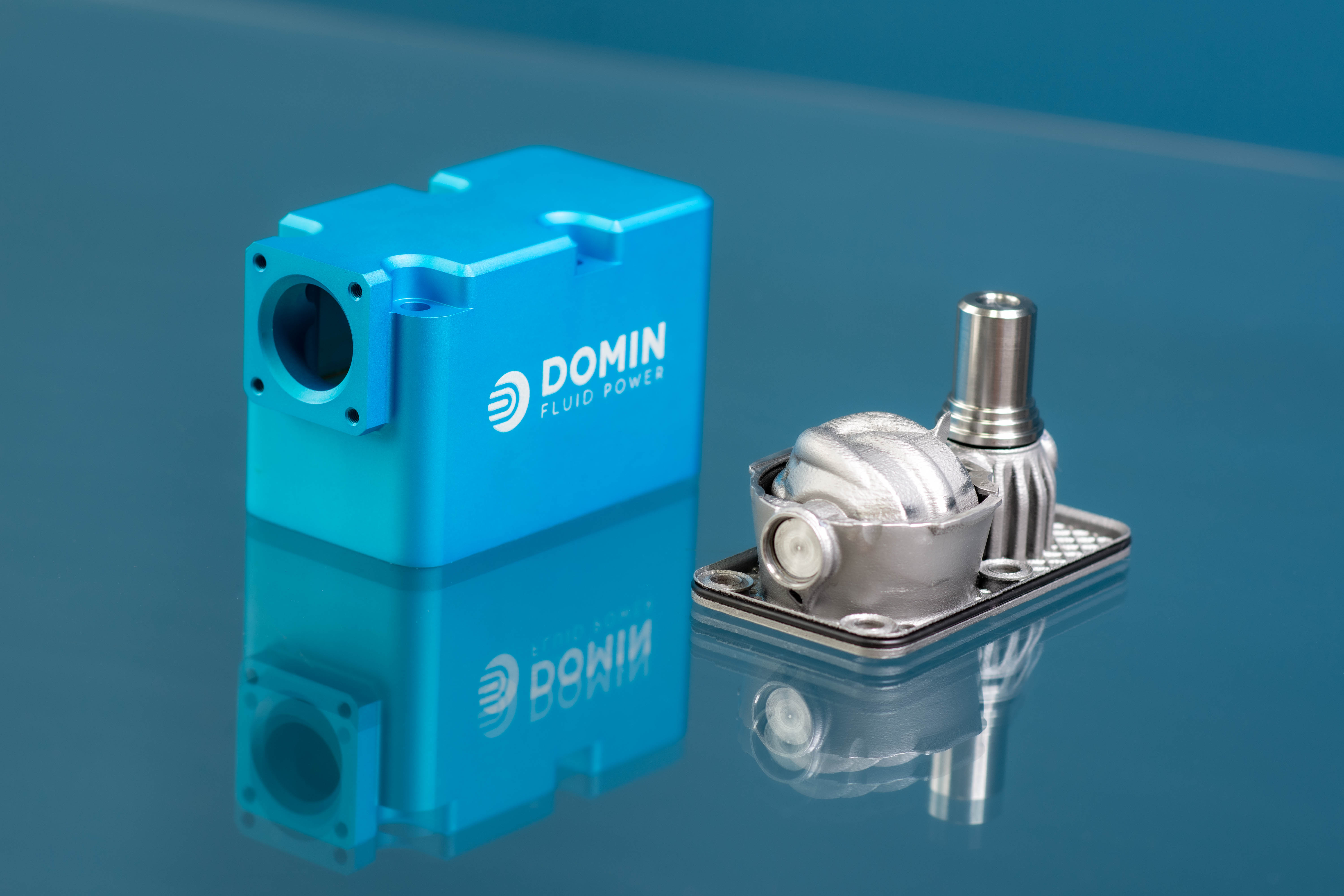
3D printing company Renishaw has used metal additive manufacturing (AM) to help manufacture a new range of direct drive valves.
‘While there has been a huge amount of innovation across the manufacturing industry in the last few decades, none of it has been significant enough to achieve true disruption in the fluid power sector,’ said Marcus Pont, CEO of Domin Fluid Power Ltd, based in the UK, which made the valves. ‘We believed that metal AM was the final puzzle piece and we’re confident we could generate true industry change and make a positive impact. There is a compelling reason disruption is needed — sustainability. In the US, the fluid power sector alone wastes about 300 million tonnes of CO2 per year through system inefficiencies.’
However, AM has traditionally been used in low-volume custom applications in aerospace, medical and automotive, rather than in high-volume, off-the-shelf products such as valves, Renishaw said. Domin also had to redesign its servo drives from first principles for the AM process, which involved combining and removing components and using clever hydraulic connections to reduce both mass and volume.
The companies used Renishaw’s RenAM 500Q 3D printer which comprises four 500W lasers able to access the entire powder bed simultaneously. This means that it can achieve build rates up to four times as fast as a single laser system, the company said. Renishaw also focused on heat dissipation, such as allowing more time to cool between each layer during the first 130 layers. Another option was to decrease the energy input by using fewer layers or building support structures with just two lasers, while building the parts with all four, exporting them as separate geometries from CAD.
The build process takes 17 hours and 21 minutes, with a machine set-up time of 30 minutes. Twelve parts are produced on each build plate, with each laser producing three components. Renishaw also designed support structures to enable easy powder removal.
According to Renishaw, Domin’s electrohydraulic valves for servo applications perform better than similar products at less cost. Customers can configure the design online to order valves. The valves are suitable for use in a range of applications including injection molding machines, actuation on vehicles and landing gear in aeroplanes. ‘We’ve already proven that AM can be used in genuine series production of off-the-shelf products in a cost sensitive market,’ said Pont. ‘Long term, we plan to create change across entire systems and develop complete solutions for the fluid power sector.’
This story uses material from Renishaw, with editorial changes made by Materials Today. The views expressed in this article do not necessarily represent those of Elsevier.






